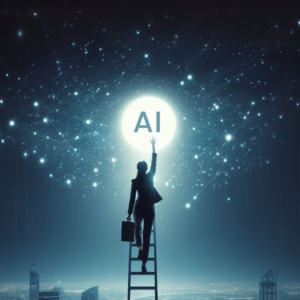In September, Google’s DeepMind AI unit in London made waves in the field of weather forecasting. Hurricane Lee was looming on the horizon, and DeepMind’s experimental software, GraphCast, provided a remarkably accurate prediction of the storm’s landfall—foretelling it would strike Long Island, Nova Scotia, deviating significantly from traditional forecasts. This event marked a breakthrough season for a new generation of AI-powered weather models, including those developed by Nvidia and Huawei.
DeepMind’s recent publication in Science detailed the superiority of its model over the forecasts generated by the European Centre for Medium-Range Weather Forecasting (ECMWF), a global weather prediction leader, across more than 1,300 atmospheric variables. This AI achievement not only surpassed conventional models in accuracy but also showcased efficiency by running on a laptop and delivering forecasts in under a minute, a task that typically demands a supercomputer for traditional methods.
The Power of DeepMind’s Neural Network (GNNs)
DeepMind’s success in weather forecasting can be attributed to its use of Graph Neural Networks (GNNs). GNNs represent data as mathematical graphs, networks of interconnected nodes influencing one another. In the context of weather forecasts, each node signifies atmospheric conditions at a specific location, such as temperature, humidity, and pressure. These nodes are distributed globally and at various altitudes, forming a comprehensive network of data. The objective is to predict how these conditions interact over time, capturing the dynamic nature of weather patterns.
When developing the forecasting model, DeepMind’s research director, Peter Battaglia, leveraged GNNs to model fluid behavior, a classic physics challenge describing the movement of liquids and gases. While training GNNs demands substantial computational power, the resulting system is lightweight, enabling quick forecasts with minimal computer resources.
Training for Precision
Training an AI model for accurate weather predictions necessitates the right data. DeepMind utilized 39 years of observations from ECMWF to teach its networks how specific weather conditions evolve over time. This process involves predicting atmospheric patterns in six-hour increments, with each forecast influencing the subsequent predictions, ultimately creating a long-term outlook spanning up to a week.
DeepMind’s researchers, Rémi Lam and Peter Battaglia, view their forecasting model’s outstanding performance as a foundation for further advancements. The adaptability of the model suggests potential improvements for specific weather conditions, such as precipitation, extreme heat, hurricane tracks, or tailored forecasts for particular regions. Google is also exploring the integration of GraphCast into its products, extending the reach of AI-driven weather predictions.
The Future Challenges and Opportunities
Despite the remarkable strides in AI-driven weather forecasting, challenges persist. The current AI models, including DeepMind’s, struggle to provide ensemble forecasts detailing multiple potential outcomes for weather events along with their probabilities. Moreover, AI models tend to underestimate the strength of extreme events like Category 5 storms, possibly due to their algorithms favoring predictions closer to average weather conditions.
Additionally, relying on historical data for training raises concerns about the adaptability of AI models to future climate changes. Traditional weather models, grounded in physics, are considered more robust in this regard. However, DeepMind’s ability to predict various weather systems, including hurricanes, with relatively limited training data suggests a level of internalization of atmospheric physics.
Beyond Weather: AI’s Unseen Impact on Everyday Life
This breakthrough in weather forecasting exemplifies how AI is quietly and profoundly transforming our daily lives. Beyond predicting storms, AI is enhancing various aspects of our routine, from personalized recommendations on streaming platforms to optimizing traffic flow in smart cities. The seamless integration of AI into our lives often goes unnoticed, yet its impact is undeniable.
Implications for Businesses
As AI continues to advance, businesses stand at the forefront of this transformative wave. The efficiency demonstrated by AI models, like DeepMind’s GraphCast, showcases the potential for businesses to leverage AI in decision-making processes. From supply chain optimization to customer insights, AI can revolutionize how businesses operate, adapt, and thrive in an increasingly complex and dynamic global landscape.
In conclusion, Google’s recent success in AI-powered weather forecasting serves as a testament to the transformative power of artificial intelligence. As these technologies evolve, their impact on everyday life and business will become increasingly pronounced. Embracing AI not only enhances our ability to predict and adapt to natural phenomena but also opens doors to innovation and efficiency in diverse fields, laying the foundation for a future where the influence of AI is felt in ways we may not even notice.
If you want to stay up to date on the latest in AI development and what it means for your business, contact Epimax and follow us on social media today.














